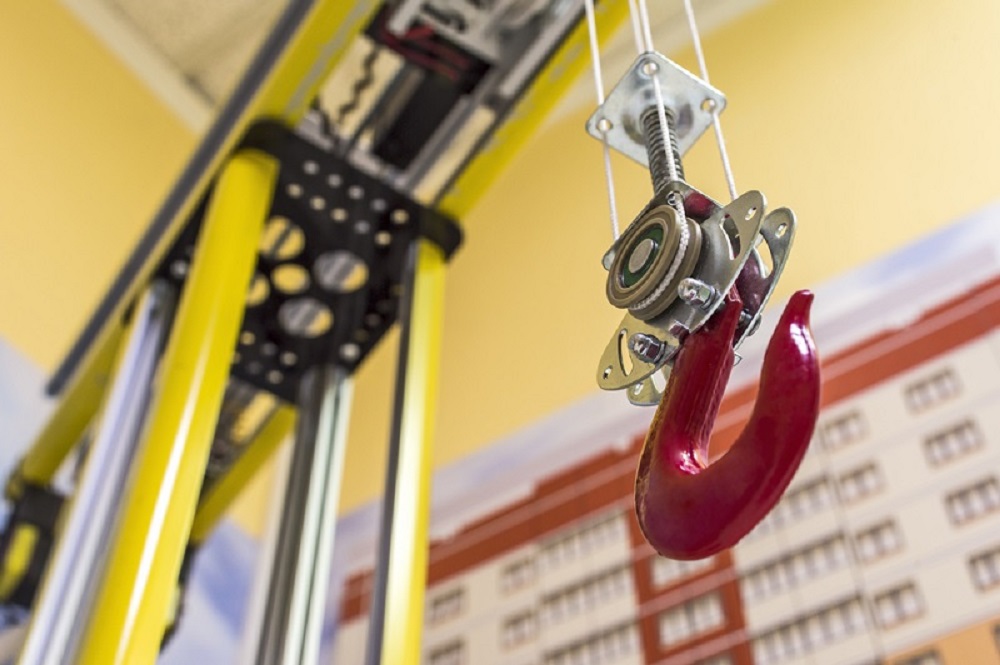A floor jib crane, which is also known as Telescopic Forklift, is a type of crane designed to be mounted on the forklift. It can lift heavy objects using a vertical mast and horizontal jib. It’s usually used in industrial warehouses and factories with no overhead cranes or hoisting equipment. There are many floor jib cranes: boom-mounted jib cranes, boom-supported jib cranes, and telescopic forklifts. Let’s know more about them.
What is a floor jib crane?
A floor jib crane is a type of crane that is used to lift and move heavy objects. This type of crane is basically used on a flat surface. The function of such cranes is to lift and lower heavy loads from one location to another, as well as lift them from the ground up into the air. This way, they are similar to other types of cranes, like a tower or mobile ones. Still, they differ in their use because they are designed solely for use on level surfaces such as floors or other horizontal surfaces, which makes them far more versatile than their other counterparts, who require more specialized conditions for proper operation.
What are the uses of floor jib cranes?
Floor jib cranes are used for lifting and lowering objects. They can be used for moving objects from one place to another or from one location to another. Floor jib cranes can also be used for moving objects from one floor to another or from one area to another.
Types of floor jib cranes:
Floor jib cranes are many different types of floor jib cranes. Still, they all have one thing in common: they must be able to lift their load vertically, as opposed to horizontally (like boom trucks).
Here are some examples of floor jib cranes and how they work!
Manual Floor jib cranes – They use a simple pulley system and lever arm to raise the load. These tend not to be very powerful but offer portability as you can easily move them around.
Hydraulic Floor jib cranes – These use hydraulic power to drive their lifting action instead of manual force like hand-powered ones do.
Articulating jib crane- It has a boom and swivels arm. They can spin smoothly to reach loads around bends and obstructions. Articulating jib cranes can be mounted on a wall, ceiling, floor, or bridge.
Mast jib cranes are floor-mounted and have building beams at the top to stabilize them. Mast jib cranes require less floor space and don’t require any hole on the foundation.
Ceiling mounted Jib cranes –They have positioned on the ceiling and take up less space on the floor while providing a special lifting force. To maintain several workstations, they might be fixed or platform-mounted.
Truck-mounted jib cranes – They have all the capabilities of the wall or floor-mounted cranes. Still, they can be relocated to any site regardless of terrain or weather. Truck-mounted jib cranes are bolted to a trailer or pickup truck’s bed and made of high-tensile steel.
How to operate a floor jib crane?
Let’s start with a brief overview of a floor jib crane and how it works. A folor jib crane is just a small crane that can lift things to 20 feet in the air. They’re designed for lifting light items, like furniture or construction material, which makes them ideal for smaller jobs around the home. The word “jib” refers to the boom arm that extends out from the machine, allowing it to hook onto whatever you want to be lifted into position.
The actual operation of these cranes is pretty simple: first, attach your load-bearing hook onto whatever is there to be lifted; then pull back on both levers at once (one controls upward movement, while another controls downward) until your target reaches its desired height; finally, lower down carefully using either lever until everything settles into place!
Conclusion
Floor jib cranes are very easy to operate and can be used for all type of lifting purposes of goods. As they come in multiple size, shape, and types, choose the one which is more suitable for your job. Ask an expert if you have any doubts about which type best suits your needs!

